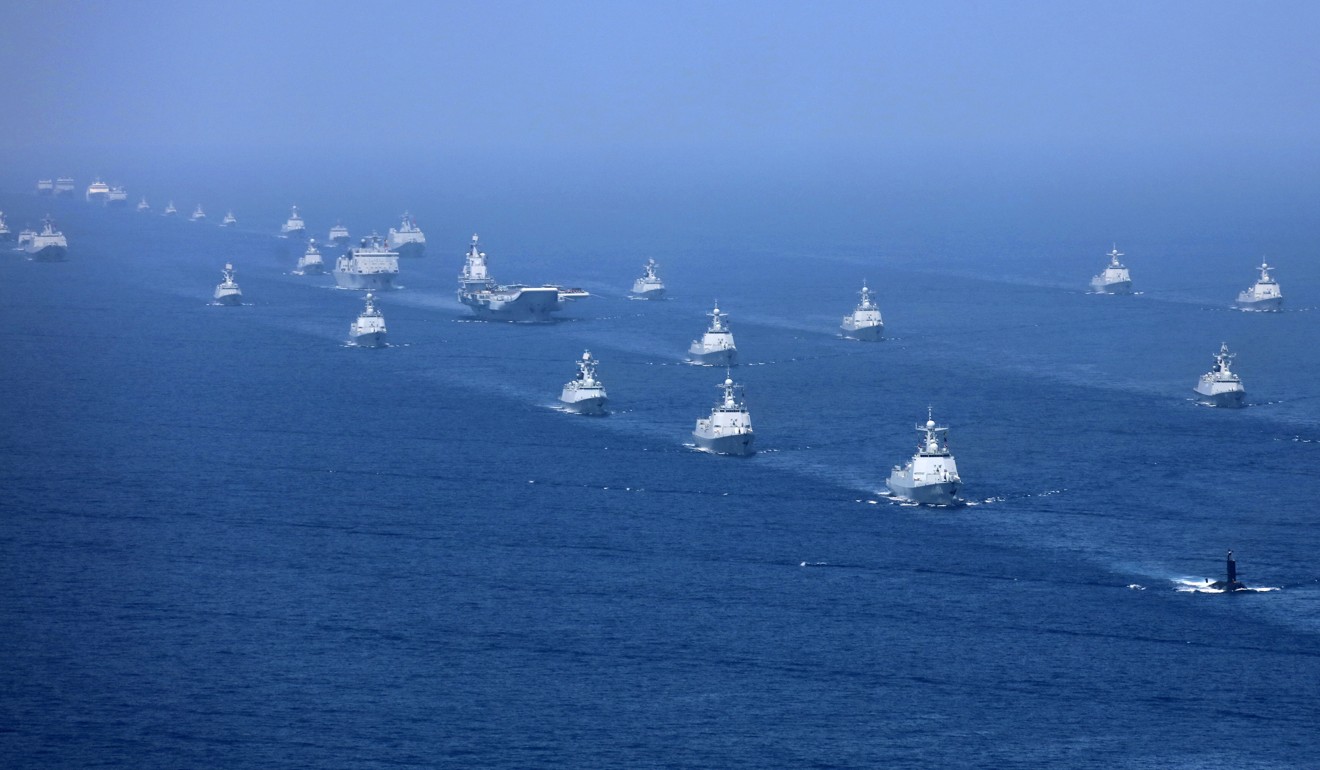
South China Sea rivalries may be played out at disputed Mischief Reef, observers say
- Spratly Island atoll has been militarised by Beijing, but is also claimed by the Philippines and others
- Tensions between US and Chinese navies have been steadily rising in disputed waters
A disputed atoll in the South China Sea could become a focal point for the rising military tensions between China and the United States in the region, observers have said.
Mischief Reef, in the Spratly Islands, is claimed by Beijing, the Philippines, Taiwan and Vietnam, although in recent years, Beijing has reinforced its grip on the territory by building a large man-made island, complete with an airfield and landing strip, around it.
Located to the west of the Philippine island of Palawan, the reef lies within the Southeast Asian nation’s exclusive economic zone, but is geographically important to Beijing as it provides a vantage point from which to monitor US military activity in and around the Philippine archipelago.
US and China risking a military mishap without ‘mature communications’
“It’s likely that the US will increase the frequency of its patrols [by both ships and aircraft] near Mischief Reef under the code of conduct for the South China Sea, which upholds freedom of navigation rights,” a source close to the Chinese military said.
“Beijing is aware of the controversy surrounding Mischief Reef, but as it claims sovereignty over almost the entire South China Sea, its military response to US naval activity there will be much stronger in the future.”
The People’s Liberation Army was also keeping a close watch for any signs of US military activity at the Antonio Bautista Air Base on Palawan, which is close to the disputed reef, he said.
While the US has been keen to build up its military ties with the Philippines – the two nations signed the Enhanced Defence Cooperation Agreement in 2014 under former leaders Barack Obama and Benigno Aquino – moves by incumbent President Duterte Rodrigo to boost ties with Beijing have raised questions about the strength of their alliance.
It’s good to talk, but China, US remain locked in a strategic struggle, observers say
Tensions between China and the US in the region have been rising in recent months. In September, a Chinese destroyer almost collided with a US warship near the Beijing-controlled Gaven Reef after performing what the Pentagon described as an “unsafe and unprofessional manoeuvre”.
The US said later it would remain engaged in the Pacific, and would next year conduct a maritime exercise with members of the Association of Southeast Asian Nations.
Beijing opens weather stations on artificial islands in South China Sea
In March, a US navy guided missile destroyer sailed within 12 nautical miles of Mischief Reef, triggering condemnation from Beijing. The incident came just two months after two Xian Y-7 military transport planes from the PLA Air Force were seen on the atoll.
Collin Koh, a research fellow at the S. Rajaratnam School of International Studies in Singapore, said the location of the disputed reef was highly significant to Beijing.
“From there, PLA bombers and strike aircraft armed with long-range missiles or precision guided munitions would pose a threat not only to Philippine military bases, but also the US military in the region, especially around Palawan,” he said.

Mischief Reef is also close to Thitu Island, where the Philippines has an airstrip, Second Thomas Shoal, which is home to a small Philippine garrison, and Reed Bank, which has not been militarised but is home to huge gas and oil reserves.
“Mischief Reef could serve as a staging area to prevent Philippine military movements from Palawan reaching Thitu Island or Second Thomas Shoal, and also be used to launch offensive operations against Philippine outposts,” Koh said.
US promises to continue South China Sea patrols to show opposition to ‘illegitimate’ claims
On the other hand, “the Chinese facilities on Mischief Reef could easily be neutralised [by enemy forces] because they are close to the Philippines and far from the PLA’s military hubs in the Paracel Islands and Hainan province.”
Despite the military tensions surrounding Mischief Reef, lawyers from around the world have yet to agree on a precise definition for the land mass.
“The legal status of Mischief Reef falls into a grey area,” said Ding Duo, a specialist in maritime law at the National Institute of South China Sea Studies in Beijing. “Scholars around the world can’t decide if it should be defined as a low-tide elevation or an island.”


